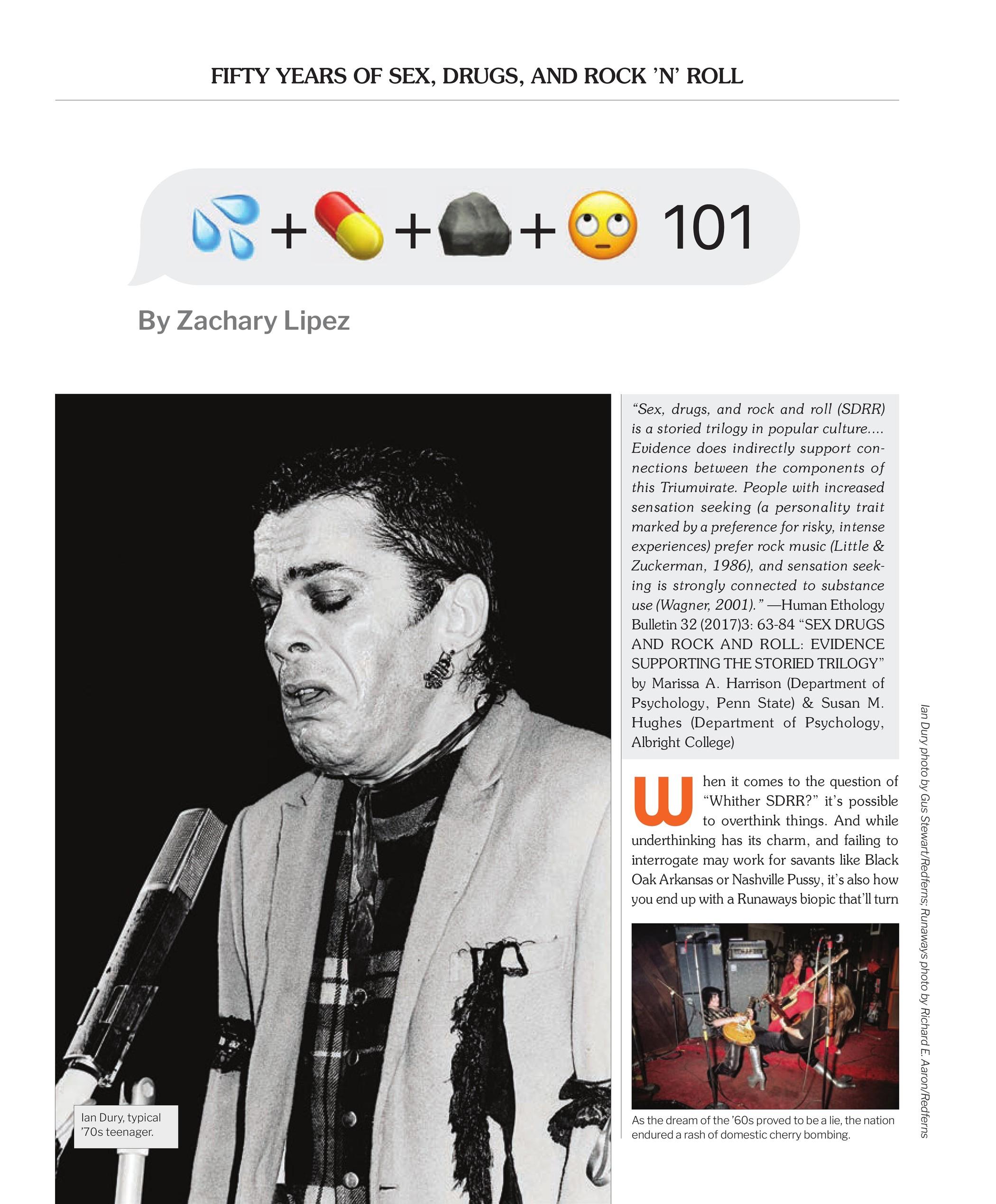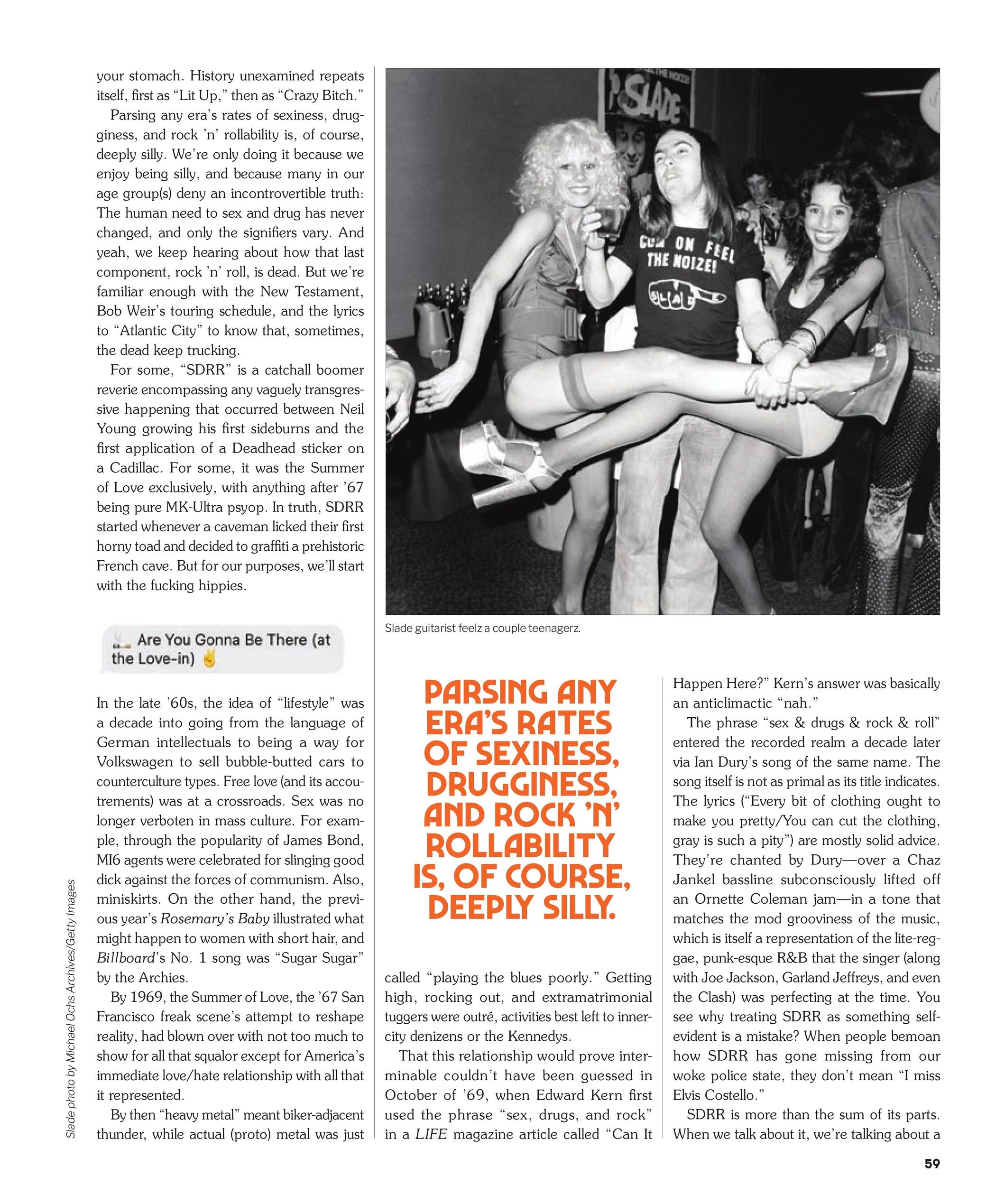💦 + 💊 + 🪨 + 🙄 101
Fifty Years of Sex, Drugs, and Rock 'n' Roll


“Sex, drugs, and rock and roll (SDRR) is a storied trilogy in popular culture.... Evidence does indirectly support connections between the components of this Triumvirate. People with increased sensation seeking (a personality trait marked by a preference for risky, intense experiences) prefer rock music (Little & Zuckerman, 1986), and sensation seeking is strongly connected to substance use (Wagner, 2001).” —Human Ethology Bulletin 32 (2017)3: 63-84 "SEX DRUGS AND ROCK AND ROLL: EVIDENCE SUPPORTING THE STORIED TRILOGY” by Marissa A. Harrison (Department of Psychology, Penn State) & Susan M. Hughes (Department of Psychology, Albright College)
When it comes to the question of “Whither SDRR?” it’s possible to overthink things. And while underthinking has its charm, and failing to interrogate may work for savants like Black Oak Arkansas or Nashville Pussy, it’s also how you end up with a Runaways biopic that'll turn your stomach. History unexamined repeats itself, first as “Lit Up,” then as “Crazy Bitch."

